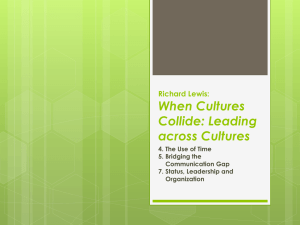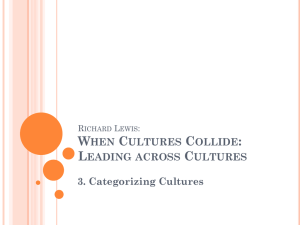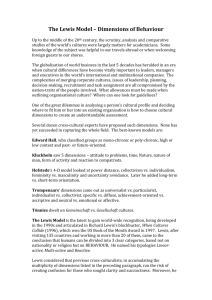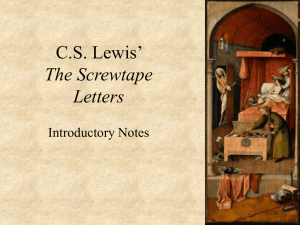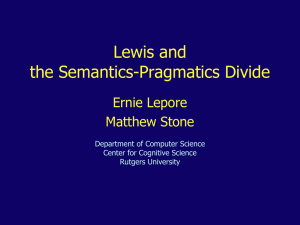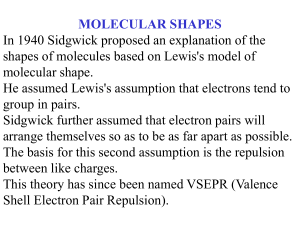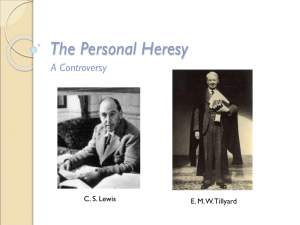The Lewis Model - dwyersinterculturalcommunication
advertisement
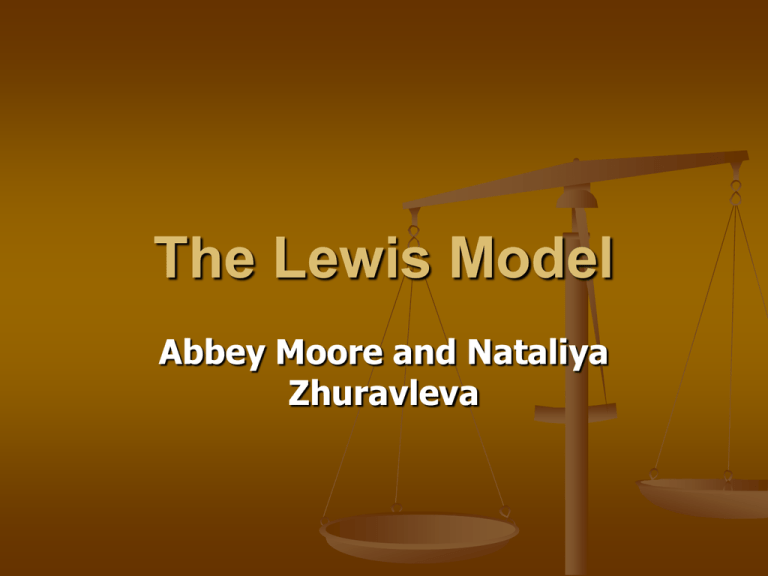
The Lewis Model Abbey Moore and Nataliya Zhuravleva Introduction - The Lewis Model The Lewis Model was constructed by Richard Lewis for purposes of culture classification The model aims to promote “harmony through understanding” The model classifies cultures into three main types: - Linear-active - Multi-active - Reactive The Lewis Model: Basic Characteristics Linear-active: - Cool - Factual - Decisive Planners Multi-active: - Warm - Emotional - Impulsive - Talkative Reactive: -Courteous -Amiable -Accommodating -Compromiser -Good Listener Basics Explained LINEAR-ACTIVE MULTI-ACTIVE REACTIVE Talks half the time Talks most of the time Listens most of the time Gets data from stats, research Solicits information firsthand from people Uses both data and people sources Plans ahead step by step Plans grand outline only Looks at general principles Polite but direct Emotional Polite and indirect Partly conceals feelings Displays feelings Conceals feelings Confronts with logic Confronts emotionally Never confronts Dislikes losing face Has good excuses Must not lose face Compartmentalizes projects Lets one project influence another Sees the whole picture Rarely interrupts Often interrupts Doesn't interrupt Job-oriented People-oriented Very people-oriented Sticks to the facts Juggles the facts Statements are promises Truth before diplomacy Flexible truth Diplomacy over truth Sometimes impatient Impatient Patient Limited body language Unlimited body language Subtle body language Cultural Types What does the Lewis Model tell us? The Lewis Model shows us: * how people from different cultures vary in their concepts of time and space: how they handle interpersonal distance, silence, and eye contact * how their communication styles are reflected in the language patterns they use What does the Lewis Model tell us? The Lewis Model can help us: *Promote harmony in inter-cultural relationships by allowing empathy and understanding to develop. *We can see that most of our reactions come from how we've been programmed by our culture, we can step back and see how different cultures react, and learn to understand such reactions Applying the Lewis Model to Australians According to the Lewis Model, Australians are mostly Linear Active, and partly Multi Active The Lewis Model therefore suggests that Australians are mostly: -Cool -Factual -Decisive Planners Yet a little: - Warm Emotional Talkative Impulsive Applying the Lewis Model to Bahrain The Lewis Model tells me that people from Bahrain are mostly Multi – Active This means that Bahraini people are: Warm Emotional Impulsive Talkative An Analysis of the Lewis Model The Lewis Model is effective in: Helping us become aware of the communication traits of each ‘Cultural Type’ The Lewis model helps us understand the communication characteristics of different ‘Culture Types’ Conclusion With an understanding of various communication characteristics among cultures, we are better able to get along both personally and professionally with other cultures; we will be able to foresee how they are likely to react in various situations Richard Lewis Quote "Cultural behavior is the end product of collected wisdom, filtered and passed down through hundreds of generations as shared core beliefs, values assumptions, notions and persistent action patterns. In other words, culture is a collective programming of the mind, which distinguishes the members of one human group from another." Thank You Sources http://www.crossculture.com/services/cross-culture/ http://docs.google.com/viewer?a=v&q=cache:rY5pQ5329usJ:faculty .fuqua.duke.edu/ciber/ice/Cross%2520Culture http://www.best-career-match.com/cross-culturalcommunication.html
